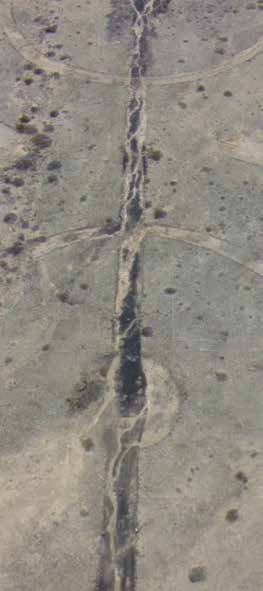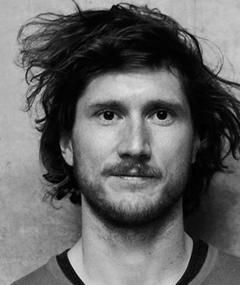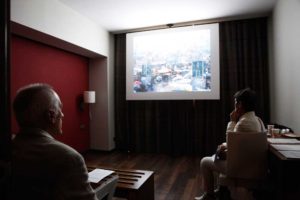
— Log in to watch the artist video if you have been given an access
- Artist
- Lukas Marxt
- Title
- Captive Horizon
- Year
- 2015
- Duration
- 14 min 38 s
- Format & Technical
Single channel, HD video, colour, sound
3 + 2 AP
Throughout the last half-century, we have witnessed a revision and evolution of the concept of landscape, both on the theoretical/discursive level and on the practical or utilitarian one. These levels have developed in parallel ways. In the first case, the vision and practices from which landscape may be addressed were extended, converting them into a multidisciplinary field of study. From a practical or utilitarian point of view, the evolutions and crises in the organisation and exploitation of territory have diversified this concept, more connected to economic or social questions. Artistic practices have participated notably in these transformations with the incorporation of new media, developing themes and new imaginaries by acting and intervening in that very space as well as making territory and nature into the work’s own support.
The Captive Horizon video fits within this recent landscape tradition initiated by movements such as Land Art in the 1960s. Through both the absence of narrative and a series of certain formal features, the piece leads us to reflect on several wholly current questions. Marxt’s video consists of an aerial sweep of various environments: suspicious circles that remind us of allegedly alien crop circles, as in science fiction films; rocks that look like the ocean floor; a kind of meander, and the rectangular shadow that accompanies us throughout most of the video. There is a common element in all of these: not a trace of human presence. These barren, post-apocalyptic landscapes lead us to think about the uncertain future of the planet, to be aware of the possible consequences of the so-called Anthropocene. In this new geological age, human acts are the greatest force on the face of the planet; it is us who will determine the weather and climate change.
Likewise, the artist’s use of the camera —at changing rhythms, seeking to disorient us, always from an aerial perspective— reminds us of the drone (UAV, unmanned aerial vehicles) video recordings, which bring to mind Harun Farocki’s reflections in Eye/Machine, 2001. In this piece, Farocki takes the first images of war distributed by television and asks himself how the ability to differentiate real images from fictitious ones is being lost, and how the technology of war has evolved towards entering daily life. Though we don’t know whether Marxt’s images belong to real landscapes or are computer-made, they could be pointing in that direction, showing us technology’s ability to be one step ahead and to generate new visions of landscape: violence could therefore be in the threatened earth and in the perception of its image, apparently unreal.
Blanca del Río
Stills

Related artist videos

Circular Inscription
Lukas Marxt
Galerie Reinthaler
Vienna
Related pages

Professionals
Lukas Marxt

Pages
LOOP Fair 2018

 <
<
